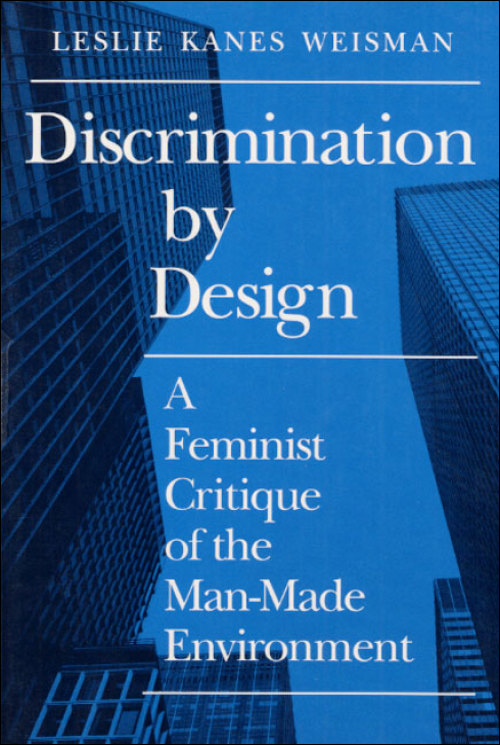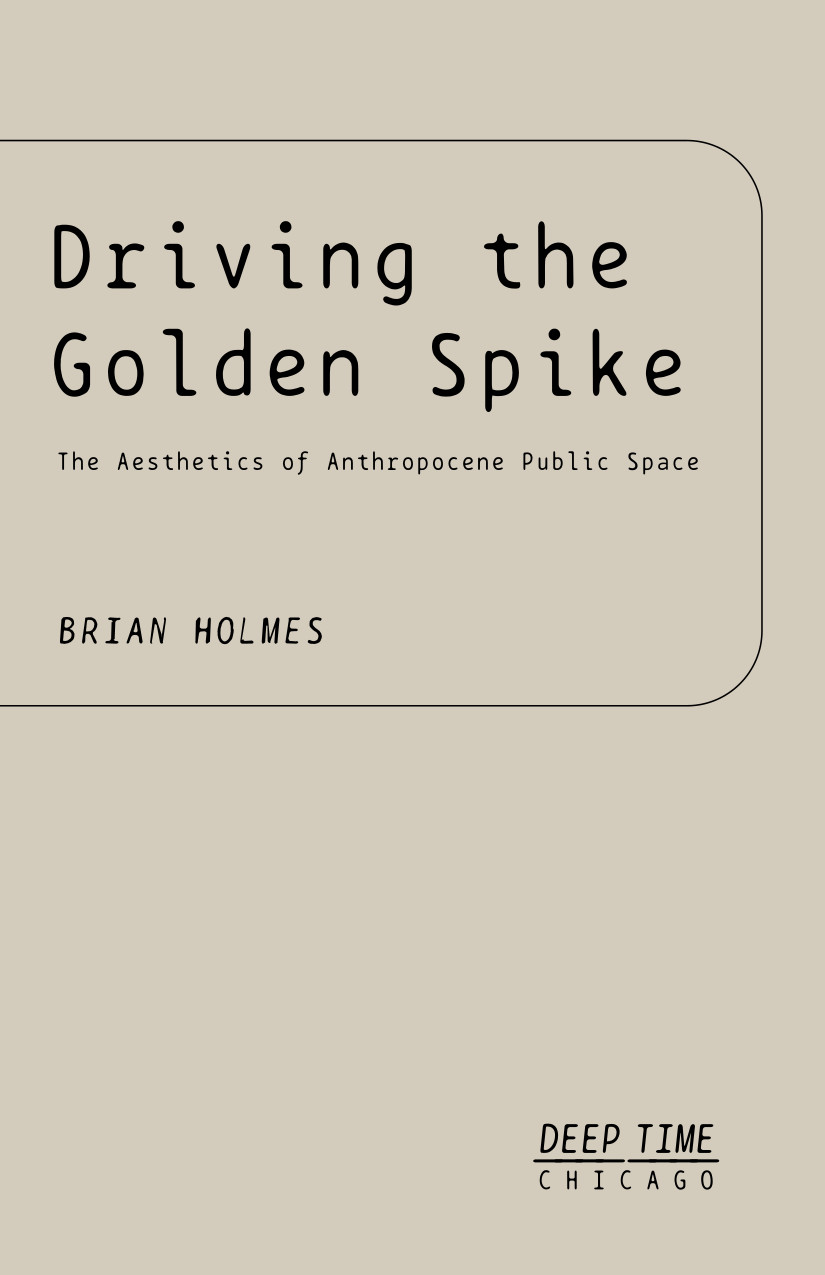Leslie Kanes Weisman: Discrimination by Design: A Feminist Critique of the Man-Made Environment (1992)
Filed under book | Tags: · architecture, city, feminism, home, public space, universal design, urban planning, women

“Discrimination by Design is a fascinating account of the complex social processes and power struggles involved in building and controlling space. Leslie Kanes Weisman offers a new framework for understanding the spatial dimensions of gender and race as well as class. She traces the social and architectural histories of the skyscraper, maternity hospital, department store, shopping mall, nuclear family dream house, and public housing high rise. Her vivid prose is based on exhaustive research and documents how each setting, along with public parks and streets, embodies and transmits the privileges and penalties of social caste.
In presenting feminist themes from a spatial perspective, Weisman raises many new and important questions. When do women feel unsafe in cities, and why? Why do so many homeless people prefer to sleep on the streets rather than in city-run shelters? Why does the current housing crisis pose a greater threat to women than to men? How would dwellings, communities, and public buildings look if they were designed to foster relationships of equality and environmental wholeness? And how can we begin to imagine such a radically different landscape?
In exploring the answers, the author introduces us to the people, policies, architectural innovations, and ideologies working today to shape a future in which all people matter. Richly illustrated with photographs and drawings, Discrimination by Design is an invaluable and pioneering contribution to our understanding of the issues of our time–health care for the elderly and people with AIDS, homelessness, racial justice, changing conditions of work and family life, affordable housing, militarism, energy conservation, and thepreservation of the environment. This thoroughly readable book provides practical guidance to policymakers, architects, planners, and housing activists. It should be read by all who are interested in understanding how the built environment shapes the experiences of their daily lives and the cultural assumptions in which they are immersed.” (from the back cover)
Publisher University of Illinois Press, Urbana, 1992
ISBN 0252063996, 9780252063992
x+190 pages
Reviews: Gail Lee Dubrow (Journal of Planning Education and Research, 1993), Esther da Costa Meyer (NWSA Journal, 1993), Diane Favro (Journal of American History, 1994), Joanne K. Guilfoil (Journal of Social Theory in Art Education, 1994), Irene Nierhaus (L’Homme, 1994, DE), Nancy M. Somerick (Public Relations Review, 1995).
Commentary: Spatial Agency (n.d.).
Brian Holmes: Driving the Golden Spike: The Aesthetics of Anthropocene Public Space (2016)
Filed under pamphlet | Tags: · aesthetics, anthropocene, public space, theory

“The idea came to me, ironically, while driving around Chicago. It was high summer; I was on the city’s shattered West Side. The urban grid slid by outside the window, residential vernacular on its third or fourth recycle, parched and decayed, with a kind of lost and disjointed vibrancy. Eyes on the traffic, my mind rolled back over the city’s history: its canals and granaries and skyscrapers, its formidable industrial century since the arrival of the railroads in the 1850s, its suburban sprawl after the Great Fire of 1873, its postmodern decline made irreversible by the 1960s revolts and the capital flight that followed. Through it all, the university and financial sectors continued their endless rise. There is a profound violence to this place, but also a deep sense of regularity. Chicago is the race-riot city that turns civil strife into social norms, and splits atoms while abstracting material production into mathematical derivatives. Can you still experiment in a place that has successively been the transport hub, the stockyard, the workshop, the vitrine, the boxing-ring, and quite literally the laboratory of modernism? And what could this ideal of experimentation mean for our future, when its Promethean pasts have reappeared before our eyes as the new geological layer of the Anthropocene?” (opening paragraph)
Publisher Deep Time Chicago, September 2016
Creative Commons BY-ND 4.0 International License
19 pages
Video lecture (April 2016, 47 min)
Publisher
PDF, PDF
HTML (e-flux, Oct 2017)
Marcello Vitali-Rosati: On Editorialization: Structuring Space and Authority in the Digital Age (2018)
Filed under book | Tags: · algorithm, authority, digital media, editing, editorialization, media, open access, public space, space, web, writing

“In this book Marcello Vitali-Rosati examines how authority changes in the digital era. Authority seems to have vanished in the age of the web, since the spatial relationships that authority depends on are thought to have levelled out: there are no limits or boundaries, no hierarchies or organized structures anymore. Vitali-Rosati claims the opposite to be the case: digital space is well-structured and material and has specific forms of authority. Editorialization is one key process that organizes this space and thus brings into being digital authority. Investigating this process of editorialization, Vitali-Rosati reveals how politics can be reconceived in the digital age.”
Publisher Institute of Network Cultures, Amsterdam, 2018
Theory on Demand series, 26
Creative Commons BY-NC-ND 4.0 International License
ISBN 9492302209, 9789492302205
114 pages

